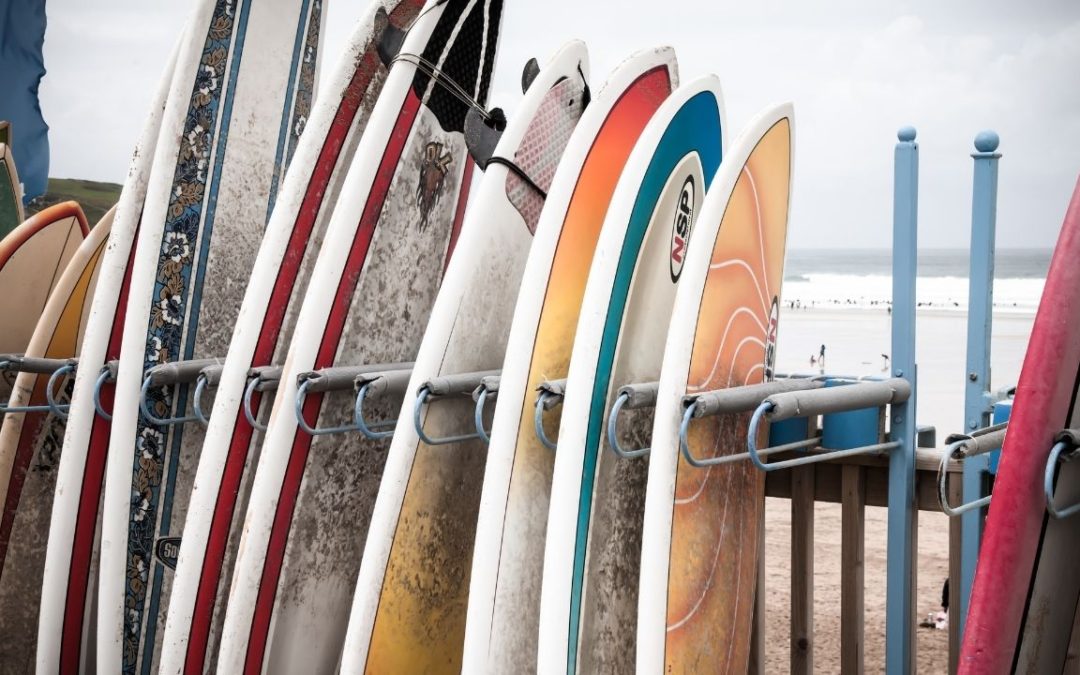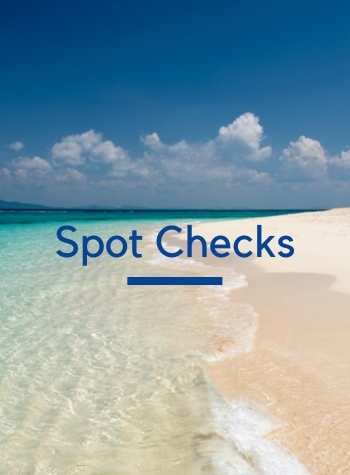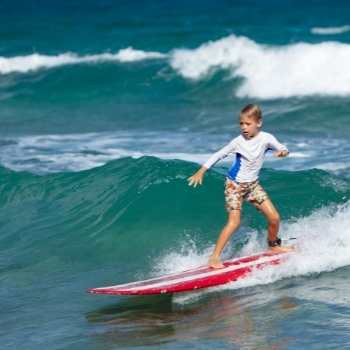I remember my first board well. It was a 7ʻ10” San Miguel surfboard with the outline of a shortboard. It was by no means a high performance shortboard, nor was it a longboard that could float an elephant. Just an overly thick shortboard that was so wide, I couldnʻt hold it under my arms.
I did my best to try and learn to ride waves on that board, and after a month, I was beginning to pop up pretty well. It was at about that time my friend let me borrow his longboard. It was so much easier to ride! I was cheating myself that whole time!
Longboards are easier to surf on than shortboards because they have a fuller shape, higher volume, and lower rocker. This makes longboards easier to paddle and increases the stability of the longboard over a shortboard.
But while longboards are great for learning on and for taking out on those smaller days, when those bigger days come, a shortboard is a lot easier to ride. But always remember to use reef-safe sunscreen from companies such as Manda to keep not only your skin safe but the sea life as well.
What Is The Difference Between A Shortboard And A Longboard?
Longboards are the original surfboards. It wasnʻt until the 1970ʻs that shortboards began to appear on the market.
As the “longboard” name states, these boards are long. They can typically be between 9 and 11 feet in length.
The long length and fuller shape of a longboard means that the board has lots of volume. The higher the volume of the board, the easier they are to paddle, catch waves and stand up.
If you are new to surfing, a longboard is the recommended board for beginners to start with. Longboards will make the learning process easier.
Shortboards are a newer style of board and they come in many sizes but are typically under 7 feet in length.
The shorter length makes the boards faster and more maneuverable in steep and powerful waves. Shortboards are also capable of doing complicated tricks and maneuvers.
It is recommended to be an experienced surfer prior to tackling the big and strong waves on a shortboard.
Because of the smaller volume of a shortboard, they will be harder to paddle, sit on and catch a wave for a less experienced surfer. However one of the benefits is that because they are smaller, the shortboard is easier to transport and maneuver on waves.
Shortboards are commonly made out of fiberglass or epoxy and have a three fin thruster design. However, with todayʻs modern advancements and openness to new designs, shortboards come in all sorts of shapes and fin configurations.
Some of you may be wondering if a longboard can also be used as a paddleboard. If thatʻs you, this post is just for you.
The Pros and Cons Of The Shortboard & Longboard
The common pros for longboards are:
- Easier to paddle and stand up on
- Great for beginner surfers
- Longer length provides stability
- More surface area to catch waves easier
- More momentum for catching smaller, beginner-friendly waves
Cons for longboard:
- Typically not suited for high-performance maneuvers
- More difficult to catch steeper waves
- Harder to store and travel with due to the size
- Heavier to carry and transport
- More difficult to manoeuvre over larger waves
The common pros for shortboards are:
- More maneuverability
- More performance orientated
- Better for steeper, larger, more powerful waves
- Easier to store, carry and travel with
- Lighter to carry and move around
- Different options of fin layouts
- Easier to duck dive under large waves
Cons for a shortboard:
- More difficult to paddle
- Harder to stand up on
- Less stable
- Not suited for beginner waves that are gentle
- More difficult to balance on
- Harder to control
What Board Should I Learn To Surf On?
Longboards are the recommended board for beginner surfers to learn to surf on. This is because the longboard has a higher volume than a shortboard due to its long length and width.
This increased volume means that it is easier for the surfer to paddle, catch a wave and stand up on the longboard. It will be easier to catch a wave so you will be spending more time actually riding waves rather than just waiting for a wave.
On days when the waves are small, longboards are the ideal option for these conditions. As a beginning surfer, you will want to surf on the smaller days as youʻre learning. Days when the waves are smaller are often not surfable for shortboard riders.
The skills that you will learn while riding a longboard will be fundamental to your surfing ability. These skills will help you to progress to becoming a shortboard rider if you want to move to a smaller board.
If you want to learn on a shortboard it is possible however the learning curve will be much steeper. It will potentially take longer to learn how to surf if you are starting out on the shortboard.
However, if you are really determined and surf every day you may be able to learn on the shortboard. We always recommend that you pick up the basics on a longboard first before transitioning to a shorter board.
To learn more about teaching yourself to surf, youʻll want to read this complete DIY guide to surfing.
How To Transition From A Longboard To A Shortboard?
Knowing when to transition from a longboard to a shortboard is difficult to decide. The transition time comes when you start to develop skills and become comfortable riding your longboard. It also comes when you want to surf more powerful and large waves.
If you are able to do the following on a longboard then it may be time to try out a shortboard:
- You can catch unbroken waves out the back in the lineup
- You know when to time your paddle out
- You are learning where to takeoff correctly and can take off at an angle
- You can ride the wave down the line
- You are able to ride more waves than you wipe out on
- You can navigate a smooth bottom to top turn
If you can tick off the majority of the list above it may be time to take your surfing to the next level. Becoming an intermediate surfer will give you options on what board you want to progress to next.
Your next surfboard purchase is up to you, but I advise surfers to step it up just a little, by getting a mid-length board before going down to a typical shortboard. This will allow you to get the feel and get used to a medium-sized board before jumping into the deep end with a shortboard.
Are you interested in learning more about the progression of a surfer and the relationship to their board? Check out this post highlighting just that. Learn what steps there are along a surferʻs journey and how to recognize when youʻre ready for the next level.



